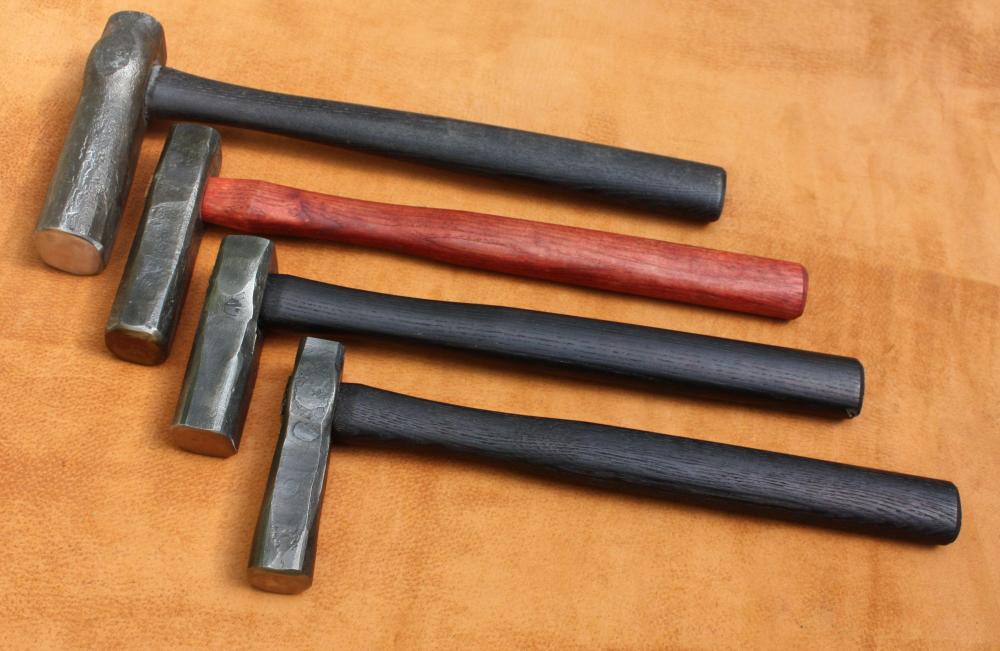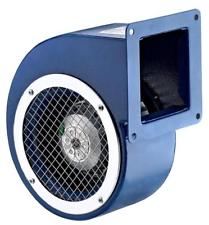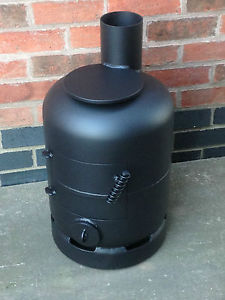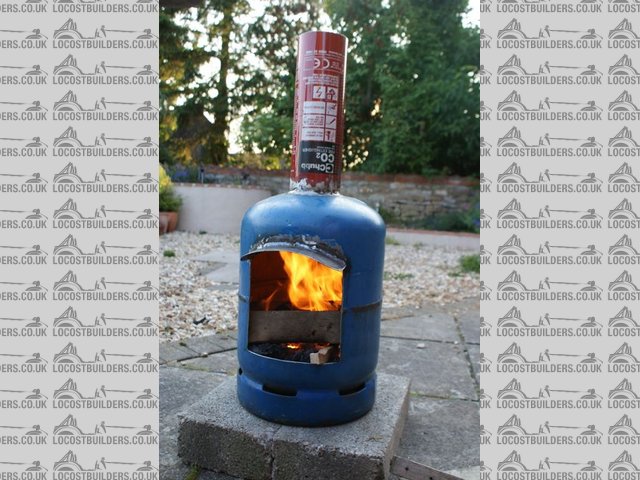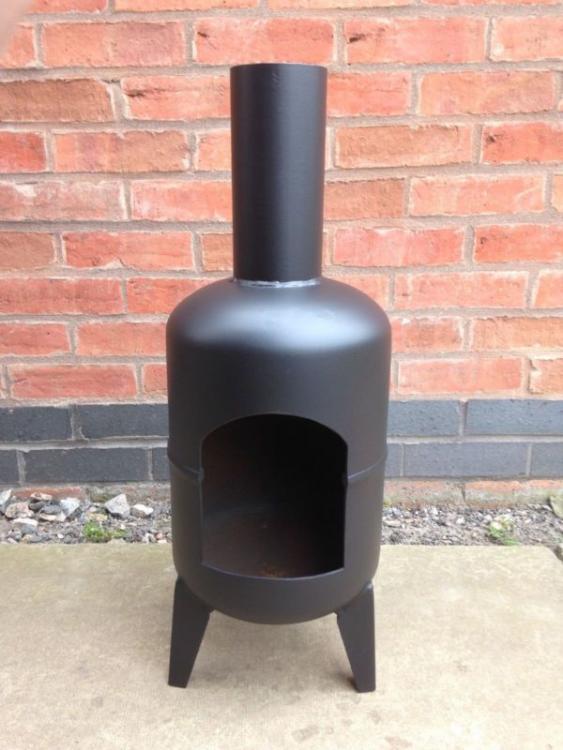
Tommytaptap
Members-
Posts
103 -
Joined
-
Last visited
Content Type
Profiles
Forums
Articles
Gallery
Downloads
Events
Everything posted by Tommytaptap
-
HI all. In answer to Frostys question about drilling into hardened steel without annealing, I have in the past used the blank shaft end of an old drill bit the same size or slightly smaller than the one I will use to drill the piece/s. Fit it to the drill press so the blank end will contact the piece. Fix the piece as you would normally do for drilling and bring the drill bit down onto it. Obviously, without any lubrication (as attaining heat is required) hold the drill bit on the piece with a medium of pressure until it starts to get really hot, like glowing hot then release it and allow to cool naturally. This will anneal a localised area of metal around where you intend to drill through the piece. which you should now be able to without problem.
-
Storing an anvil so it does not rust
Tommytaptap replied to Glenn's topic in Anvils, Swage Blocks, and Mandrels
TP has it. A vacuum removes most chances of condensation which as we all know consists of mainly water; H2O-not too far from H2sO4. My own anvil is in a wooden workshop which is susceptible due to weather and the limitations of the wood jointing-tongue and groove system and attempts to seal it somewhat- to the vagaries of massive changes in humidity. My chemistry lessons taught me however, that ferric oxide should protect any ferrous metal from ferrous oxide. So maybe a wax containing lots of fe2O3 would do the trick. Discuss please... -
Anvil with a crack!!!!
Tommytaptap replied to Spiffing's topic in Repairing and Modification to Anvils
There are good anvil bargains to be had here but as others have said, you must be patient and you should do some reading up to increase your knowledge base to help you decide what is good and what is not. Gumtree is a much better source for your search than fleabay. You may have to travel to collect but so what? (unless you have no transport!) For example, I know of a 140lb English anvil that sold for £70 only a couple of years ago(of course I snatched it quicker than lightning!) They do come up but you must be prepared to wait and continually monitor the site. In the meantime you could, unless you have already, obtain a large lump of steel to use as an anvil and start practising! You must though, pay good attention as to what sort of metal to get and how to use it properly-and not follow any of the dross you may see on youtube. You have come to a community who have hundreds of extremely expert blacksmiths and similar so use this database and their knowledge and skills to help you do it right. If you don't already know, this site is a whole worlds worth of excellent metalworking(and other materials)knowledge-search and learn!! On the subject of the anvil you mention, there is nowhere near enough information or close up photos for anyone to say anything about it other than - avoid! -
Hi. Hope this helps-these hammers are for sale by an English blacksmith making custom knives. They are described as Japanese weight forward hammers that have excellent control over forging blades to exclude 'dinging'' or marking them unintentionally in the process.
-
Mini Camping Cleaver
Tommytaptap replied to MastaStan's topic in Axes, Hatchets, Hawks, Choppers, etc
And for that matter, how many people clean their food cutting implements before using them as well as after? Well I do with the mini cleaver! It has a clean polished blade which extends the whole length of it and is roughly 3/4" deep-and that's enough for me for what I am cutting. -
I think if you filled the untreated, clean steel tank with plain water, left it 24 hrs and drain it then, when its dry coat it with a steel rust prevention coating. When that's dry use heat resistant silicone pumped on and spread out all over the inside of the tuyere, that would not only seal the container from leaks, it would prevent corrosion. Heat on the water side wont ever be a problem and the solution for the nozzle is well covered by Frosty.
-
Mini Camping Cleaver
Tommytaptap replied to MastaStan's topic in Axes, Hatchets, Hawks, Choppers, etc
In the same way as you would not think twice about 'seasoning' any sort of a cast iron, totally 'rough' bodied cooking container to hold food or, other cast iron food associated implements or indeed a carbon steel pan or wok-you would and should do that to a cleaver made to be similarly rough bodied. Then from there, the same goes for cleaning and maintenance of said items. That done you can safely use it for any and all cooking processes associated with the use of a cleaver without worrying. Which is more than you can say about some food outlets cooking and serving utensil cleaning regimes. There are several methods and finishes available to achieve desirable results, all of which are 'food safe.' -
Don't wait-buy it NOW!
-
A positive note here is I believe; you may have saved your mom or someone else from a dreadful accident in the future from using that old broken blade.
-
Whats wrong with a hofi supersidesucker? You could have all of the chimney outside. You can have a proper job then-12" diameter x 3mtrs high for £65 off ebay-galvanised steel spiral ducting is what to type. Someone on here will point you to the hofi style.
-
A big +1 on the use of gloves when working that wood. Don't forget to wear good quality respirator suited to the tasks also-most of the African hardwoods are at the very least irritants-a few much worse for you than that. Cut a small piece, polish it and see what sort of chatoyance if any is present. You may be pleasantly surprised!
-
That old trick works very well with a sheared off or anyway stubborn machine bolt that's trapped eg engine block bolt. heat her up and twist her out-no problem.
-
Find out who the owner is and get their permission in writing to take some before removing anything. As far as I know, none of it will be high carbon steel of any note. As steel goes it will all be fairly 'soft.'
-
Baked potato with butter, cheese and beans wrapped in h/d tinfoil works a treat. I have a dutch oven for larger meals but it would take up too much room and generally get in the way whereas a small spud is easy to move about. No doubt others will chip (scuse pun) in. Tom.
-
Hi Joel- Very well done you indeed. A superb example of artisanal 'smithing at its best. It looks truly stunning. The two rails it is mounted on are a nice touch. I do hope its well fastened down to prevent it flying away. Can you tell us all the processes you executed to produce the piece? Tom.
-
help me with anvil id
Tommytaptap replied to Metalmaster01's topic in Anvils, Swage Blocks, and Mandrels
You could always fall back on reddening some metal and making some. After a minimum of research after getting your head and fingers around the vagaries and anomalies of this forums workings- smacking some steel into various shapes will be a pleasure- guaranteed. -
Henry Don't know if you've looked at the link supplied by LBS but the company don't ship to the UK which is a shame. However, all is not lost. I have also been looking for a pukka blower and came across this one on Ebay UK. Called a Bahcivan 140.60 theyre on sale in Germany for around £80 incl postage. They are even open to best offers on them! They are made specifically for blacksmith coal forges. They also sell potentiometers to vary the motor speed. Sorry don't know how to bring a link here but check out ebay-just type in bahcivan 140.60 . Tom. ps- managed to attach a picture of it!
-
Henry. I too have the same blower as yours. I don't know the technical details but I am given to believe that the motor in it is not one you can alter the speed of. I loosely fitted with one small bolt, a piece of Perspex to the induction grille side of it and that reduces the airflow somewhat by pulling the Perspex towards the grille. That combined with leaving a gap as described gives a much more reasonable flow. Tom.
-
quick tour Mr. Theo Nazz & Mr. Neil Kamamura's shops
Tommytaptap replied to SLAG's topic in Blacksmithing, General Discussion
Hey Frosty- You seem to have lost all interest in your recent posting about a wood burning firegrate. Have you not seen the subsequent replies? -
Hi Frosty- Over this side of the pond, generally speaking I would, using a multi-fuel burner to burn wood; not use a fire grate at all. A grate holding other fuels like coal, charcoal etc. would need a grate to hold it up, to help circulate air to promote the fire and allow ash to drop through. Using wood of any sort as fuel, it is much better to allow it to sit on a flat solid bed of metal. (perhaps just a few small holes here and there to allow any water to drain through if left outdoors for any length of time) have the sides built up as far as you wish to hold the type of wood you will use. In the same way the a coal forge needs help from forced air to assist the fire-wood does not need anything else but the ambient air around it to burn successfully. In fact it burns better without a grate. There are thousands of ways you can do this and it is fair simply than constructing what you intend. For instance, here is a gas cylinder that has been modified albeit quite extensively but, it could be as simple as just cutting out a large enough hole in the side to accommodate your wood, a hole in the top for a chimney and some legs so as not to burn anything underneath it when in use. The second image is a far simpler affair. I just edited and included a third image which is the one I would go for. In fact, if you were to use a tall bottle, you could have a shelf in it around halfway up, solid steel welded in one, on which could sit your fire and the bottom half could be your 'wood store.' Just have a pull down side door to hold the wood/ash in until you open it to remove the ash!
-
Show me your anvil stands
Tommytaptap replied to pkrankow's topic in Stands for Anvils, Swage Blocks, etc
-
Any sort of a matt finish to it wouldn't reflect light from it (which causes it to look too fabricated) and would give it a more natural, rusty look. I think.
-
A bit of spit an polish on the anvil face plate would add to the authentic 'working smithy' I think, maybe with a hammer and a 'piece' of work in progress lying atop it too. Marvellous array of old tools there, looks like it would take years to catalogue so much. Hope you've got it all secured and insured. Its a lot of valuable stuff there, if it were to be lost.
-
But you might need a huge gearwheel from a large vehicle, such as an abandoned tank.
